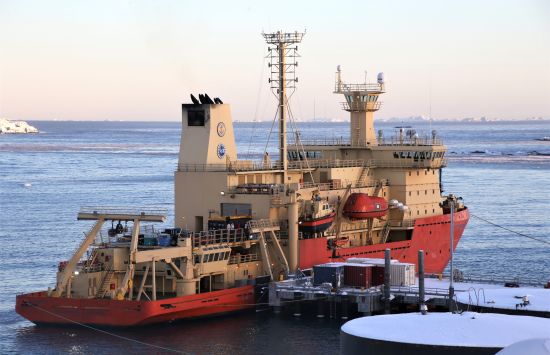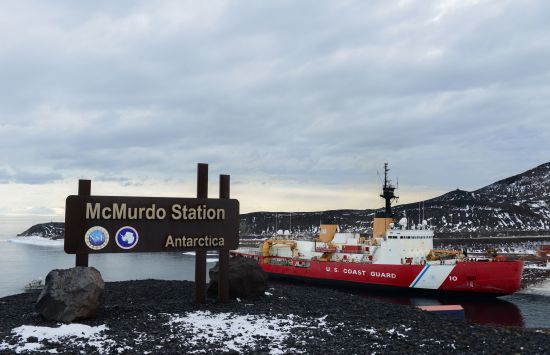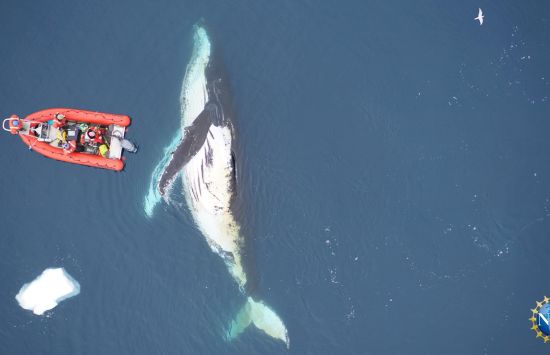The Research Vessel Icebreaker Nathaniel B. Palmer
In 1992, the 308-foot RVIB Nathaniel B. Palmer was built with icebreaking capability and delivered for use by the USAP for extended scientific missions in the Antarctic.
- The ship can carry 45 scientists and technicians and 22 crew members.
- The ship can break 3 feet of ice at 3 knots.
- Ship capabilities include coring, seismic, seafloor dredging, mooring operations, water column sampling, small boat ops, unmanned aerial systems, autonomous underwater vehicles and remotely operated vehicles.
- The ship sails an average of 240 days every year.

The U.S. Coast Guard Cutter Polar Star
The USCGC Polar Star was built in 1976 and is the U.S.’s only active heavy icebreaker. Its home port is Seattle, Washington, and it is under the control of the U.S. Coast Guard Pacific Area and Defense Forces West.
- The ship is crewed by 140 members of the USCG.
- The ship undergoes a massive overhaul in the off-season (May to October) to keep it running smoothly.
- The ship can break 6 feet of ice at 3 knots and 21 feet of ice by backing and ramming.
- The USCGC Polar Star cuts a channel for cargo, refueling and research vessels to pass through and reach the pier at NSF McMurdo Station, part of an effort called Operation Deep Freeze, which was first named by Admiral Richard Byrd in 1955.

NSF Palmer Station small boating capabilities
NSF Palmer Station has several smaller boats which are used for science research support.
- A fleet of small boats facilitates researchers around NSF Palmer Station. The fleet includes two custom-built 30-foot closed cockpit rigid hull inflatable boats (RHIBs) deployed in 2017. The RHIBs expand the research perimeter around the station by 20 miles. Also available are two 19-foot open cockpit RHIBs, two to four 22-foot heavy-duty F580 Zodiacs and one 25-foot aluminum landing craft.
- The fleet supports diving operations, island landing (for penguin research, weather sensors and seal census/tagging), whale tagging, net tows, water column sampling and seaglider recoveries.


